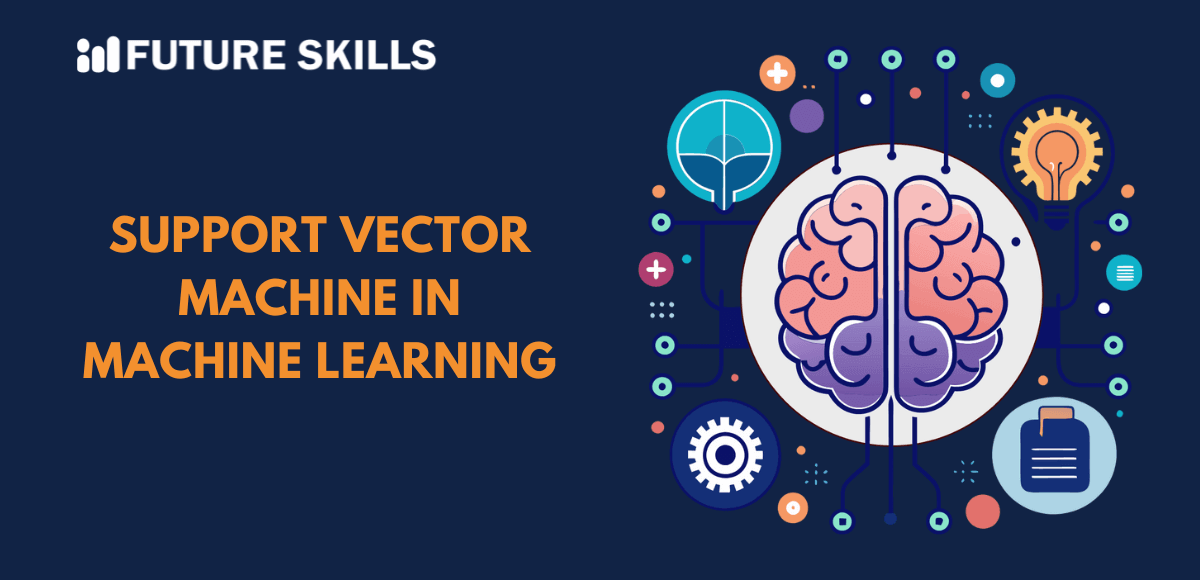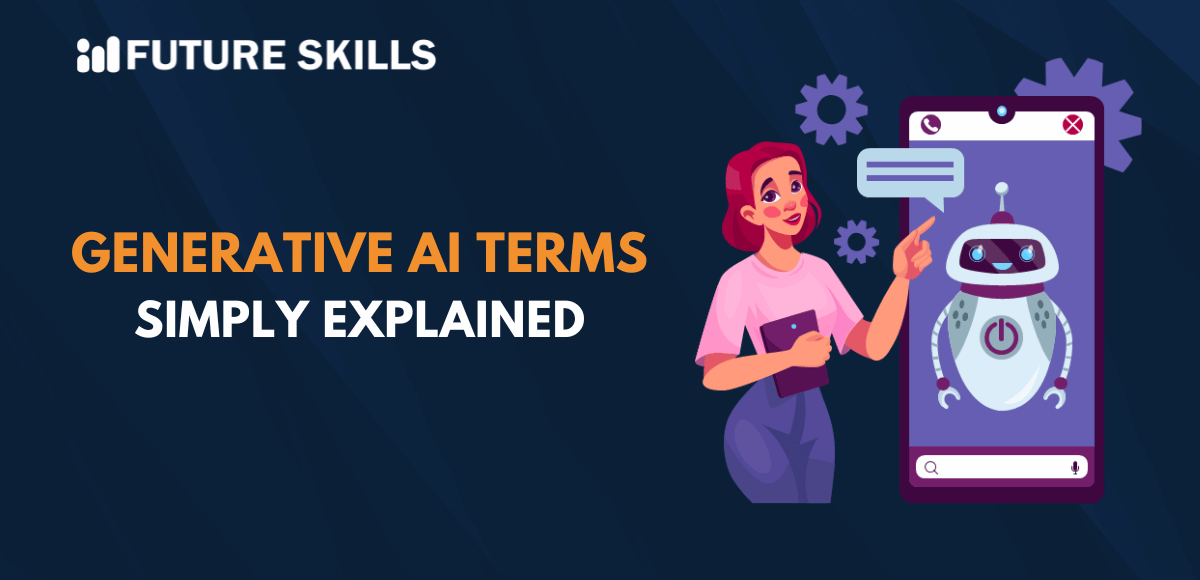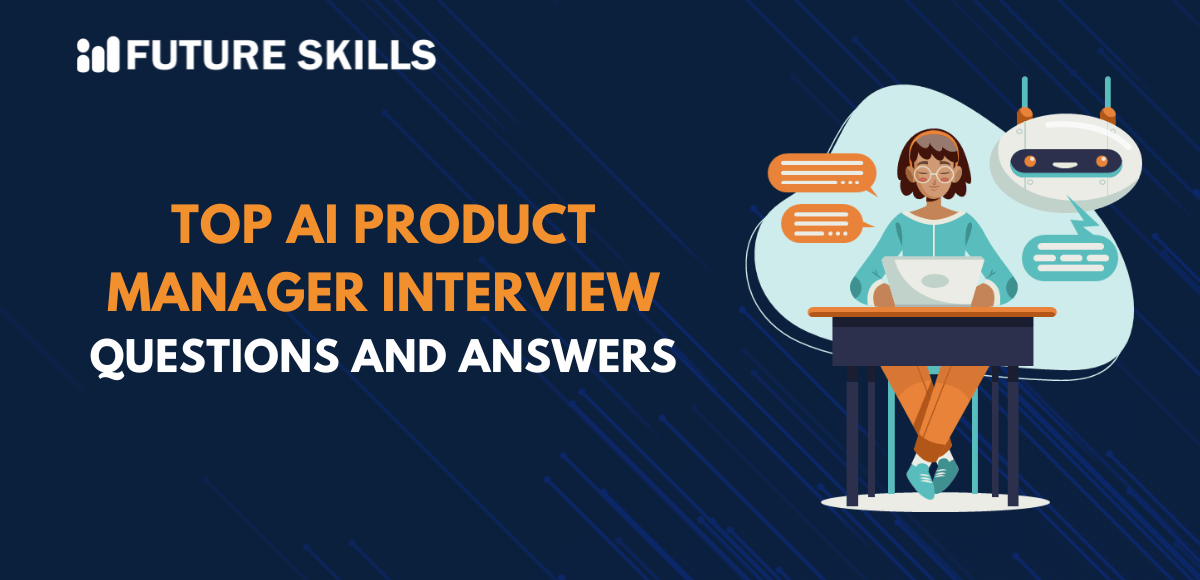Support vector machines are machine learning algorithms that leverage supervised learning models to solve a broad range of complex problems. You can use support vector machine in machine learning to work on regression, outlier detection and classification problems. SVMs offer the advantage of optimal data transformations to determine the ideal boundaries between different data points on the basis of predefined labels, outputs or classes. The adoption of SVMs across various industries including natural language processing, speech and image recognition, and healthcare has attracted the attention of machine learning enthusiasts.
SVM algorithms work by determining a hyperplane that differentiates the data points from different classes. The localization of the hyperplane ensures that the largest margin provides a line of difference between the two different classes. The efficiency and adaptability of SVMs ensure that you can use them in different applications that involve non-linear relationships and high-dimensional data. Let us learn more about support vector machines and their significance in the domain of machine learning.
Get professional AI training to advance your career and achieve your dreams. Enroll in our accredited AI Certification Course today!
Understanding the Fundamentals of Support Vector Machines
Support vector machines or SVMs are supervised machine learning algorithms that help in classification of data with a hyperplane. The hyperplane is the optimal line for maximizing the distance between classes in an N-dimensional space. The origins of SVM algorithm in machine learning can be traced back to the 1990s. You must notice that SVMs are the ideal alternatives that you can use in classification problems.
SVMs work by differentiating two classes in which they find the optimal hyperplane to increase the distance between data points of opposite classes that are closest to each other. The number of features in input data help in determining whether the hyperplane is a plane in an N-dimensional space or a line in a two-dimensional space. It is important to note that you can find multiple hyperplanes for differentiating classes thereby increasing the margin between points. As a result, the algorithm can discover the best decision boundary in between the concerned classes.
The algorithm can use these abilities for effective generalization with new data alongside coming up with accurate classification predictions. SVM algorithms have gained popularity in machine learning for their capabilities to manage non-linear and linear classification tasks. You would have to use kernel functions when the data cannot be classified with linear separation approaches. You can pick any type of kernel function such as polynomial kernels, sigmoid kernels or radial basis function kernels, according to the desired use case or data characteristics.
Discovering the Important Components of SVMs
The search for answers to queries like ‘What is the principle of SVM?’ should begin after you have identified the important components in SVMs. Awareness of the components in the architecture and important terms in the working mechanism of support vector machines can help you understand their working principle. You must know the following important terms before you try to dive deeper into concepts of SVMs.
- Hyperplane in SVMs refers to the decision boundary that helps in separating data points from separate classes in one feature space.
- Support vectors are the data points that are the closest to the hyperplane and help in determining the margin and hyperplane.
- The margin in SVMs refers to the distance between the hyperplane and the support vector. Every SVM tries to enhance its margin as wide margins can guarantee better performance in classification tasks.
- Hard margin refers to the maximum-margin hyperplane that clearly differentiates data points from different categories without classification errors. Soft margin technique is useful in scenarios where data may contain outliers or cannot be separated perfectly.
- Kernel is also one of the crucial aspects in machine learning SVM functionalities as the mathematical function can empower SVMs for diverse tasks. The mathematical function can help in mapping the original input data to high-dimensional feature spaces. It helps in easier discovery of the hyperplane when data points don’t exhibit linear separation in the actual input space.
- Support vector machine users are also likely to come across concepts like hinge loss and dual problems. Hinge loss is a common loss function in support vector machines that penalizes margin violations or incorrect classifications. The dual problem is a type of optimization problem that involves identification of Lagrange multipliers associated with support vectors. The dual problem helps in enabling kernel tricks alongside better effectiveness in computing.
- Another important component in the working of SVMs is the C regularization parameter. C helps in balancing margin maximization and misclassification penalties. Higher value of C implies stricter penalties that would lead to narrower margins and reduce the chances of wrong classifications.
Learn about the vector databases in Machine Learning and their working mechanism in detail.
Demystifying the Working Principle of Support Vector Machines
The use of support vector machines for classification tasks in machine learning dictates their importance in the AI ecosystem. It is important to note that machine learning SVM algorithm works primarily by transforming input data into a high-dimensional feature space. The transformation is an effective intervention to discover linear separation and effective classification of the datasets. SVMs can achieve this transformation through a kernel function.
Support vector machines employ the kernel function to ensure computation of the dot products between transformed feature vectors. It avoids the need for calculating coordinates of the new space independently and reduces the burden of unwanted and expensive computations. SVMs can support linearly and non-linearly separable data with the help of different kernel functions. The importance of kernel functions lies in their ability to discover complex patterns and relationships within the data.
The SVMs leverage a mathematical formulation in the training phase that helps in finding the optimal hyperplane or the kernel space. It is a crucial element in SVMs as it increases the margin between data points from separate classes alongside reducing classification errors. Kernel functions serve a vital role in the working of SVMs by enabling mapping of data to the kernel space from the original feature space. You must also remember that the selection of kernel functions would have a formidable impact on the performance of SVMs.
Factors to Consider While Choosing Kernel Functions
The choice of kernel function for your SVM would depend on the characteristics of data and the problem under consideration. It is important to note that the decision to choose a kernel function would involve a tradeoff between complexity and accuracy. Powerful kernel functions such as the radial basis function kernel can achieve higher accuracy albeit with higher data requirements and extended computation times. After the training process, your SVM can categorize new data points by finding out the side of the decision boundary in which the unseen data falls.
The effectiveness of support vector machine in machine learning use cases also depends on the choice of kernel functions. Linear kernel functions are the simplest functions that help in mapping data to higher-dimensional spaces for linearly separable data. Polynomial kernel functions are useful for mapping data to high-dimension spaces for non-linearly separable data. Radial basis functions or RBF kernel functions are the most powerful options that can help you with different classification problems. Sigmoid kernel functions are somehow similar to RBF kernel functions albeit with a different shape that is ideal for certain classification issues.
Are you interested in making a career in Machine Learning? Read about how you can learn mathematics for Machine Learning which can play a crucial role in your ML career.
Common Variants of Support Vector Machines
Support vector machines can be classified into two different variants, such as linear and non-linear SVM that offer specific functionalities. You can use them to deal with specific problem scenarios. Linear SVMs are useful for linearly separable data as they use linear kernels to develop straight-line decision boundaries. Non-linear SVMs can help in addressing scenarios in which data is not separable by a straight line in input feature space.
Learn how to use ChatGPT in your daily lives with our Certified ChatGPT Professional (CCGP)™ Course that offers expert guidance and a diverse curriculum.
Identifying the Advantages and Setbacks of SVMs
The best way to figure out the importance of SVM algorithm in machine learning involves learning about their advantages and limitations. SVMs offer the advantages of versatility and effectiveness in high-dimensional spaces. Support vector machines are not vulnerable to overfitting as compared to other algorithms and ensure better effectiveness for limited data. SVMs are also capable of managing non-linear data through kernel functions that help in transforming input space to high-dimensional feature space.
The advantages of support vector machines cannot overshadow their limitations as you must understand them to make the most of SVMs. Some of the notable setbacks of SVMs include requirement of more computation resources and higher sensitivity to parameter tuning. SVMs also present scalability issues in the case of massive datasets due to computational and memory constraints. The other limitations of SVMs include difficulty in understanding complex models and lack of probabilistic outputs.
Final Thoughts
The review of different functionalities of support vector machines shows that they are critical tools in the machine learning ecosystem. The machine learning SVM algorithm relationship helps in designing models that can excel at classification tasks. You can notice that the working of SVMs involves the use of kernel functions, depending on the characteristics of data. SVMs are capable of generalizing effectively to new and unseen data, thereby outperforming other algorithms.
As you learn more about machine learning, you can figure out valuable insights about support vector machines. You can compare SVMs with other algorithms such as logistic regression, neural networks, or decision trees. In addition, you must also find information on the different practical applications of SVMs and their benefits. Learn more about SVMs and their implications for real-world uses of machine learning now.







